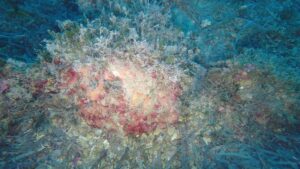Geobiology is an interdisciplinary science that draws on contributions from various fields of knowledge (Paleontology, Sedimentology, Biogeochemistry, Biology, Ecology) to explore and understand complex systems and their changes over time. Geobiology examines the interactions between the biosphere and the lithosphere, that is, between all living organisms and the solid surface of the planet. It is based on the principle that the planet and its environments influence and shape the evolution of life and the distribution of organisms, while at the same time, living organisms actively modify the environment in which they live.
The ways in which living organisms affect and transform their environment are numerous, ranging from chemical alteration, mainly carried out by bacteria, to mechanical alteration, performed by vertebrates and invertebrates that dig into sediments, bore into wood, erode shells and rocks (destructive transformation), or build barriers, solid deposits, and reefs (constructive transformation, as seen in reef formations).
In cases where organisms physically create habitats with their own bodies—habitats that would not exist otherwise—they are referred to as autogenic habitat engineers, such as trees, tropical reef corals, or the calcareous algae of the Coralligen, the Mediterranean’s reef system. Reefs are bioconstructions that form through the accumulation of skeletal remains from successive generations of habitat engineers, fossilized in situ. Due to the slow pace at which they form, these structures are considered geo-historical, as they have interacted for millennia with the slow but immense changes driven by geological processes (tectonics, volcanism, climate changes, sea-level fluctuations, etc.).
Along the Italian coasts, which bear witness to a millennia-old history, natural processes and those induced or controlled by humans have often intertwined, sometimes creating places of extraordinary natural and cultural richness, such as the Marine Protected Area of Capo Rizzuto.

Credits
Università di Milano-Bicocca / DISAT – Dipartimento di Scienze dell’Ambiente e della Terra